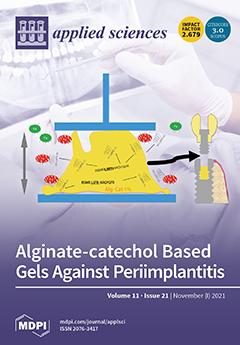Xenobiotic Triclosan (TCS) is of great concern because of its existence in a variety of personal, household and healthcare products and continuous discharge in water worldwide. Excessive use of TCS-containing sanitizers and antiseptic products during the COVID-19 pandemic further increased its content in
[...] Read more.
Xenobiotic Triclosan (TCS) is of great concern because of its existence in a variety of personal, household and healthcare products and continuous discharge in water worldwide. Excessive use of TCS-containing sanitizers and antiseptic products during the COVID-19 pandemic further increased its content in aquatic ecosystems. The present study deals with the cyto-genotoxic effects and biochemical alterations in the hatchlings of
Labeo rohita on exposure to environmentally relevant concentrations of TCS. Three-days-old hatchlings were exposed to tap water, acetone (solvent control) and 4 environmentally relevant concentrations (6.3, 12.6, 25.2 and 60 µg/L) of TCS for 14 days and kept for a recovery period of 10 days. The significant concentration-dependent decline in cell viability but increase in micronucleated cells, nucleo-cellular abnormalities (NCAs) and DNA damage parameters like tail length, tail moment, olive tail moment and percent of tail DNA after exposure persisted till the end of recovery period. Glucose, triglycerides, cholesterol, total protein, albumin, total bilirubin, uric acid and urea (except for an increase at 60 µg/L) showed significant (
p ≤ 0.05) concentration-dependent decrease after 14 days of exposure. The same trend (except for triglycerides, albumin and total bilirubin) continued till 10 days post exposure. In comparison to control, transaminases (alanine and aspartate aminotransferases) increased (
p ≤ 0.05) after exposure as well as the recovery period, while a decline in alkaline phosphatase after exposure was followed by a significant increase during the recovery period. The results show that the environmentally relevant concentrations of TCS cause deleterious effects on the hatchlings of
L. rohita.
Full article





